Prices in AUD. Shipping worldwide. Flat rate $8 postage per order within Australia. International by weight calculated at checkout. Read full terms.
-

Albania (2)
-

Austria (2)
-

Belarus (1)
-

Bulgaria (2)
-

Croatia (1)
-

Cyprus (2)
-

Czechoslovakia (1)
-

Denmark (1)
-

Estonia (2)
-

Finland (7)
-

France (54)
-

Germany (33)
-

Greece (39)
-

Hungary (26)
-

Iceland (7)
-

Italy (45)
-

Latvia (1)
-

Liechtenstein (1)
-

Lithuania (2)
-

Malta (2)
-

Montenegro (1)
-

Netherlands (6)
-

Norway (13)
-

Poland (8)
-

Portugal (7)
-

Romania (5)
-

Russia (8)
-

Serbia (2)
-

Spain (16)
-

Sweden (6)
-

Switzerland (7)
-

Ukraine (1)
-

Yugoslavia (1)
-
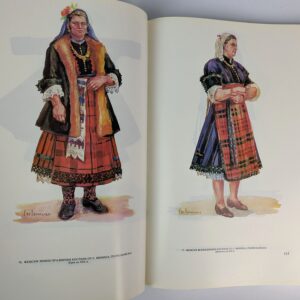
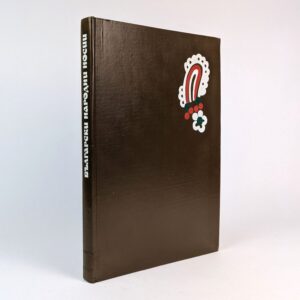
Bulgarian Folk Costumes Volume IV: Bulgarian Folk Costumes from South Bulgaria in the 19th Century and the First Half of the 20th
AU$100.00 Read MoreAdd to cartM. Veleva; E. Lepavcova
Sofia: Publishing House of the Bulgarian Academy of Sciences, 1988.The final volume in a 4 work series on Bulgarian Folk Costumes focusing on Southern Bulgaria.
-
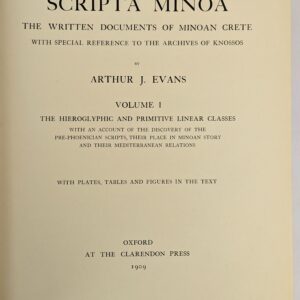
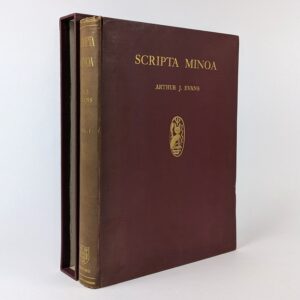
Scripta Minoa Volume I
AU$600.00 Read MoreAdd to cartArthur J. Evans
Oxford: The Clarendon Press, 1909.The Written Documents of Minoan Crete with Special Reference to the Archives of Knossos. Volume I: The Hieroglyphic and Primitive Linear Classes with an account of the discovery of the pre-Phoenician scripts, their place in Minoan story and their Mediterranean relations. Volume I only, Volume II was not published until 1952.
-
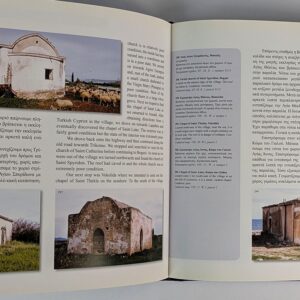
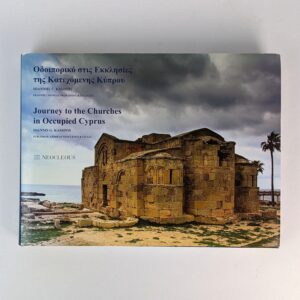
Journey to the Churches in Occupied Cyprus
AU$150.00 Read MoreAdd to cartIoannis G. Kassinis
Limassol: Neocleous, 2011. -
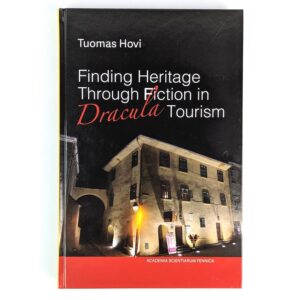
Finding Heritage Through Fiction in Dracula Tourism
AU$65.00 Read MoreAdd to cartToumas Hovi
Helskinki: Suomalainen Tiedeakatemia, 2016.Heritage and tourism have become inextricably linked. Depending on the view point, the effect of this link can be seen either negative or positive. Does tourism produce inauthentic and falsified tradition, threatening cultural heritage? Or does it, in fact, help to preserve heritage, culture and folklore in a changing and globalizing world? Tuomas Hovi investigates heritage in the context of Dracula tourism in Romania: tourists visiting places connected with either the fictional vampire Dracula or the historical Dracula, Vlad the Impaler, a 15th century Romanian ruler. How is Romanian heritage and culture presented and promoted through a seemingly superficial Dracula tourism based on Western popular fiction in Dracula tourism? Finding Heritage Through Fiction in Dracula Tourism offers new perspectives on the research literate concerning tourism and heritage, and a folkloristic view of tourism research. FF Communications No. 311 published by the Finnish Academy of Science and Letters.
-
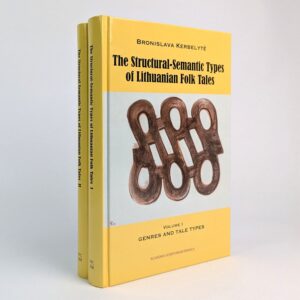
The Structural-Semantic Types of Lithuanian Folk Tales (2 Volumes)
AU$150.00 Read MoreAdd to cartBronislava Kerbelyte
Helskinki: Suomalainen Tiedeakatemia, 2015.I: Genres and Tale Types. II: The Classification and Index of Elementary Plots and Their Types. The classification system of the types of folk tales published by Antti Aarne in 1910 was a much needed and courageous project. Bronislava Kerbelyte has classified more than 40,000 variants of Lithuanian folk tales according to the international catalogue by Antti Aarne and Stith Thompson (AT). She has concluded that it is necessary to improve the classification system. Kerbelyte has determined elementary plots (EP) as structural elements for narratives and created the structural-semantic method for analysis and description of texts on several levels. The classification of elementary plots and their types contains much information about folk tales and about people. FF Communications No. 308 & 309 published by the Finnish Academy of Science and Letters.
-
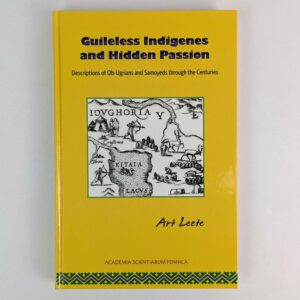
Guileless Indigenes and Hidden Passion: Descriptions of Ob-Ugrians and Smoyeds through the Centuries
AU$80.00 Read MoreAdd to cartArt Leete
Helskinki: Suomalainen Tiedeakatemia, 2014.This monograph is aimed for discussing the views of the character of the Khanty, Mansi and Nenets by authors of different periods. Changes of general ideas about the inhabitants of the Arctic has had a remarkable, albeit often concealed, role in the development of the research on northern peoples. The author examines the image of northern peoples beginning from ancient Greek and Roman accounts of peoples, medieval sources, modern travel journals and ends up with the analyses of contemporary scholarly writings. The book is an attempt to explore the general background of ideas and the scientific methodology that frames changes in this knowledge about the peoples of the North. The theoretical framework of this monograph is related to the dialogue between modern theories of identity and the historical modes of description. FF Communications No. 306 published by the Finnish Academy of Science and Letters.
-
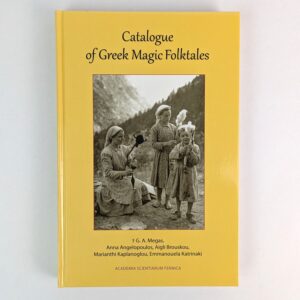
Catalogue of Greek Magic Folktales
AU$80.00 Read MoreAdd to cartG. A. Megas; Anna Angelopoulos; Aigli Brouskou; Marianthi Kaplanoglou; Emmanouela Katrinaki
Helskinki: Suomalainen Tiedeakatemia, 2012.The collected texts cover a period of more than a century of recordings (from the second half of the nineteenth century up to the mid-1970s) and geographically cover not only the entire Greek territory and Cyprus but also other areas where Greek populations live(d) and Greek cultures thrive(d) (Asia Minor, Pontus, Cappadocia, Southern Italy). Georgios A. Megas drafted the first catalogue, gathering and indexing all published and unpublished Greek folktale versions, so that the number of texts finally exceeded 23 000. A group of specialists continued for nearly 30 years carrying this project, consulting, classifying, and commenting G. Megas’ handwritten card indexes, and finally editing this rich material, scattered in public and private archives. FF Communications No. 303 published by the Finnish Academy of Science and Letters.
-
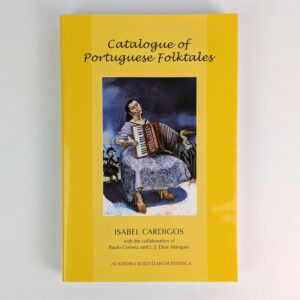
Catalogue of Portuguese Folktales
AU$60.00 Read MoreAdd to cartIsabel Cardigos; Paul Correia; J. J. Dias Marques
Helskinki: Suomalainen Tiedeakatemia, 2006.In the old Aarne / Thompson, Portugal was virtually non-existent, appearing in the bibliography of just three folktales. In 2003, the author of The Types of International Folktales stretched his hand to the first manuscript of the Catalogue of Portuguese Folktales and included them in 700 types of his own manuscript. The Catalogue of Portuguese Folktales is now the first regional index that takes into account the classifications of the new ‘ATU’. But it displays its difference by electing its own affinities with old ‘AT’ numbers, with regional catalogues, or even by offering new numbers. We can see a new face of the European folktale emerging, with a strong Mediterranean flavour. FF Communications No. 291 published by the Finnish Academy of Science and Letters.
-
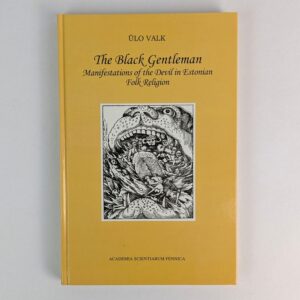
The Black Gentleman: Manifestations of the Devil in Estonian Folk Religion
AU$50.00 Read MoreAdd to cartUlo Valk
Helskinki: Suomalainen Tiedeakatemia, 2000.This empirical study of the Devil in the collections of the Estonian Folklore Archives, reflecting the world of belief inhabited by the Estonians in the 19th and 20th centuries, is also a book about suspicion and fear in everyday life. It describes how religious folklore has drawn borders between the human and the non-human, how it has modelled the Other, the supernatural and social evil. As a study of folk narrative, and legends in particular, it mainly discusses variation at the level of motif with special reference to the visual guises of the Devil. FF Communications No. 276 published by the Finnish Academy of Science and Letters.
-
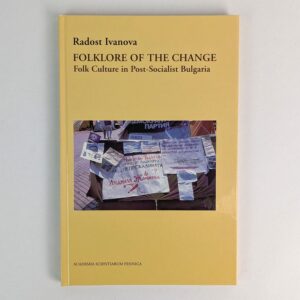
Folklore of the Change: Folk Culture in Post-Socialist Bulgaria
AU$40.00 Read MoreAdd to cartRadost Ivanova
Helskinki: Suomalainen Tiedeakatemia, 1999.The book analyses the developments taking place in Bulgaria in the years following November 10, 1989. The dynamics of the political and socio-economic changes in that period are comparable only to the most extreme periods of Bulgaria’s history. This study is not a political analysis. It is an attempt to follow the changes in people’s mentality. This book documents the enthusiasm of the negation of a chimera lasting half a century and the euphoria of the search for new roads. The volume consists of eight studies, seven of which deal with the democratic processes and developments in Sofia. FF Communications No. 270 published by the Finnish Academy of Science and Letters.
-

In and Out of Enchantment: Blood Symbolism and Gender in Portuguese Fairytales
AU$60.00 Read MoreAdd to cartIsabel Cardigos
Helskinki: Suomalainen Tiedeakatemia, 1996.The core of fairytales is the realm of enchantment. This study argues that the bloodshed associated with menstruation, defloration and childbirth–natural episodes in the lifecycle of women–is central to a syntax of enchantment and disenchantment that is common to all fairytales. It is a reflection on the gendered voices that have generated and contributed to the structure and symbolism of fairytales; and it takes shape along with the discussion of Portuguese versions of wide-spread tale types like AT303 (The Two Brothers), AT313 (The Girl as Helper in the Hero’s Flight and AT516 (Faithful John), as well as through an intriguing ecotype of Snake Helper tales (AT533*), ‘The Little Snake’. FF Communications No. 260 published by the Finnish Academy of Science and Letters.
-

The Tales of the Ploughwoman
AU$40.00 Read MoreAdd to cartMarisa Rey-Henningsen
Helskinki: Suomalainen Tiedeakatemia, 1996.Appendix to FFC 254. FF Communications No. 259 published by the Finnish Academy of Science and Letters.
-
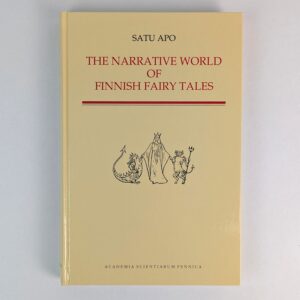
The Narrative World of Finnish Fairy Tales
AU$60.00 Read MoreAdd to cartSatu Apo
Helskinki: Suomalainen Tiedeakatemia, 1995.Finnish fairy tales represent the northern branch of the Western European fairy-tale tradition. Although Finnish epic folklore and mythology have been objects of great research interest, Finnish fairy tales have been studied surprisingly little. This study answers not only methodological but also the most important empirical questions, such as: what are the themes, plots and characters which have been able to entertain both fairy-tale tellers and their listeners from one generation to the next? How can these contentual elements be understood and interpreted within the framework of traditional Finnish folk culture? /// The methodological issues dealt with here include the question of how to approach traditional folklore material recorded in the 1800s, of which there is an enormous amount but very little accompanying contextual information. In order to analyse the contents of the tales, this study suggests the use of several semantic levels of abstraction as well as the systematic analysis of variation; only then is it feasible to present macrocontextual, interpretive hypotheses in which narrative and cultural structures are examined side by side. FF Communications No. 256 published by the Finnish Academy of Science and Letters.
-
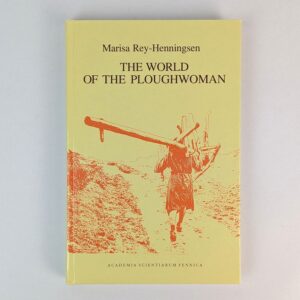
The World of the Ploughwoman: Folklore and Reality in Matriarchal Northwest Spain
AU$60.00 Read MoreAdd to cartMarisa Rey-Henningsen
Helskinki: Suomalainen Tiedeakatemia, 1993.This study is a contribution to the discussion of folklore as a mirror of society. Spanish Galicia offers a special opportunity for examining wellknown folktales in a different context because of the cultural and economic dominance of women and the matriarchal life style which characterized the region until recently. That matriarchy was deeprooted in Galicia and did not result from male migration in modern times, is demonstrated in the historical chapters of the book, while the anthropological chapters (on family systems, work patterns, matriarchal ideology, sexual behaviour, religion and magic) tend to show that all aspects of Galician culture have been “canonized” in folklore; folklore therefore must have gone through radical changes in order to conform with the local ideology. While the women in Galician folktales almost always appear in active and aggressive hero roles, this has nothing to do with “wishful thinking” or “poetic fiction”, for according to the matriarchal concept it is just the natural order of things. Surely the correlation demonstrated here between the social structure, gender roles, and ideology may also be observed in male-dominated societies, once we learn to disengage from the patriarchal concept of the “natural order of things”. FF Communications No. 254 published by the Finnish Academy of Science and Letters.
-
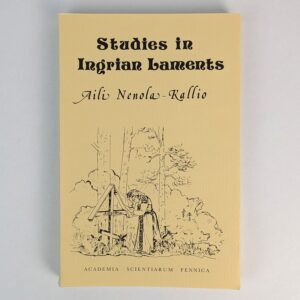
Studies in Ingrian Laments
AU$40.00 Read MoreAdd to cartAili Nenola-Kallio
Helsinki: Suomalainen Tiedeakatemia, 1982.Collection and analysis of Ingrian lament traditions, exploring ritual expression, grief, and regional folk poetics. FF Communications No. 234 published by the Finnish Academy of Science and Letters.
-
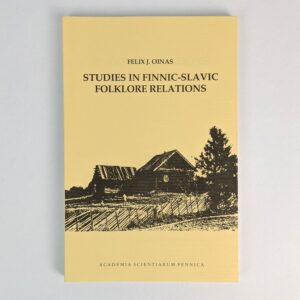
Studies in Finnic-Slavic Folklore Relations
AU$30.00 Read MoreAdd to cartFelix J. Oinas
Helsinki: Suomalainen Tiedeakatemia, 1991.Comparative study of Finnic and Slavic folklore, examining shared motifs, narrative structures, and cultural exchanges. FF Communications No. 205 published by the Finnish Academy of Science and Letters.
-
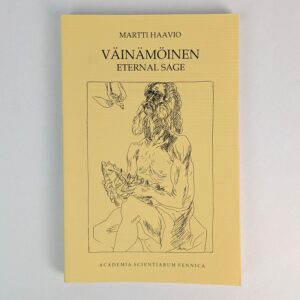
Vainamoinen: Eternal Sage
AU$50.00 Read MoreAdd to cartMartti Haavio
Helsinki: Suomalainen Tiedeakatemia, 1991.Mythological study of the eternal sage of the Kalevala, exploring his role as culture hero, shaman, and primordial singer in Finnish epic tradition. FF Communications No. 144 published by the Finnish Academy of Science and Letters.
-
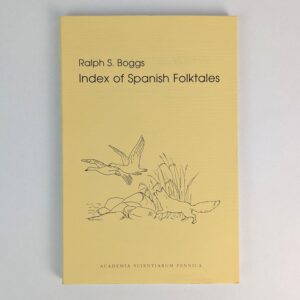
Index of Spanish Folktales
AU$30.00 Read MoreAdd to cartRalph S. Boggs
Helsinki: Suomalainen Tiedeakatemia, 1993.Classified according to Antti Aarne’s types of the folktale, translated and enlarged by Stith Thompson, in FF Communicatoins No. 74. FF Communications No. 90 published by the Finnish Academy of Science and Letters.
-
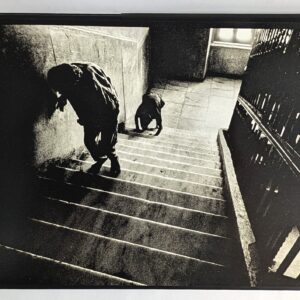

Leros
AU$300.00 Read MoreAdd to cartAlex Majoli
London: Trolley, 2002.Debut photo book by Magnum photographer Alex Majoli documenting the psychiatric hospital on the Greek island of Leros.
-
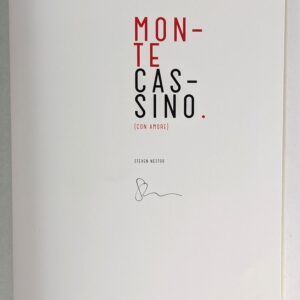

Monte Cassino (Con Amore)
AU$20.00 Read MoreAdd to cartSteven Nestor
Sydney: T&G Publishing, 2019.“Monte Cassino: Con Amore is an exploration by Steven Nestor of the destruction of a small Italian town Monte Cassino and its monastery in the Second World War. Surviving copies of The Illustrated London News from 1944 lead Nestor on a journey to discover and record the last remaining traces of the devastation of the town and the Benedictine monastery built on the site of the original Abbey chosen and founded by St Benedict in the 6th century. Blending original material from his research archive alongside his own images, Nestor encourages the viewer to cross into an elusive but violent past. The photographic windows throughout this book look out onto a buried past that continues to inform and shape our present through the fragments that have survived destruction, the passage of time and a human quest to overcome disaster. This is a journey across unremarkable contemporary places and into their dark history: forlorn graffiti semaphores in a space once littered with casualties of battle, a collapsed street sign lies unnoticed on the edge of town and autumns mulch burns on the road that snakes its way up to the summit of worship and war.” (publisher’s blurb) This copy signed by Nestor on the title page.
